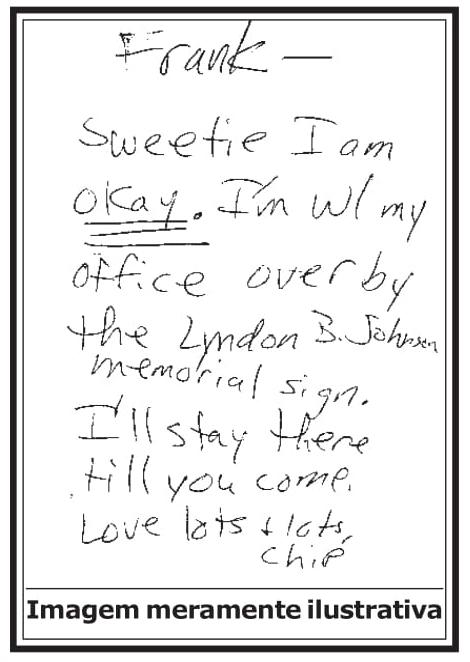(EsPCEx- 2017)A handwritten note from September 11
(EsPCEx - 2017)
A handwritten note from September 11
In moments of crisis, our first thoughts are usually to get in contact with the people we love. September 11, 2001, was a day when many people wanted to know that their loved ones were safe. At 9:37 a.m., the Pentagon was attacked by terrorists who crashed an airplane into the western side of the building.
Many people tried using the mobile phones that existed then, but few were successful. Franklin and Daria Gaillard (Frank and Chip) were both members of the Air Force and worked at the Pentagon. They worked in different parts of the building and had a previous agreement that they would meet at their car in the parking lot if there were any emergency.
Daria was the first to arrive at the car and wrote a note to Franklin saying “Frank - Sweetie I am okay. I’m w/ my office over by the Lyndon B. Johnson Memorial Sign. I’ll stay there till you come. Love lots & lots, Chip.” Frank found the note and was able to locate his wife in the aftermath of the attack.
What makes this story so interesting is the handwritten note. Today, in our digital culture, we have a variety of ways to let people know that we are safe. Text messages, voicemail, and different forms of social media can be used to get the information out to loved ones. In 2001, when these attacks __________(1), the cellular network was still growing and was not as robust as it is today.
This letter is just one of the many objects that The National Museum of American History __________(2) since 2001. To learn more, visit our online exhibition September 11th: Bearing Witness to History.

Adapted from http://americanhistory.si.edu/blog/handwritten-note-september-11-2001
In the sentence “the cellular network... was not as robust as it is today” (paragraph 4), the word robust means
capable of producing repeated failures in bad conditions.
capable of performing without failure under a variety of conditions.
capable of predicting critical weather changes in other countries.
capable of creating standard responses to technical problems.
capable of manufacturing its own components in bad conditions.


